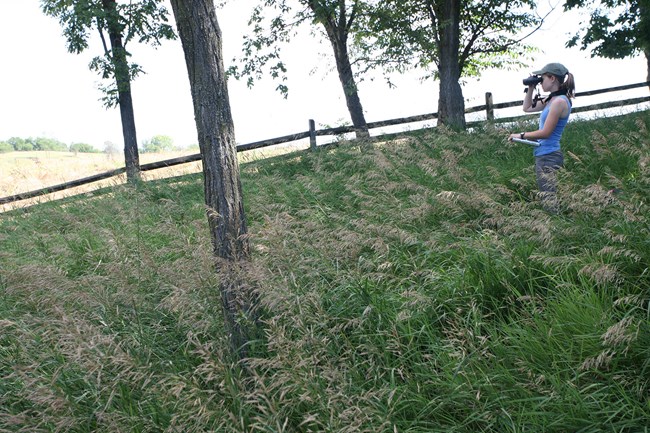
NPS/Nortrup
The National Capital Region Inventory & Monitoring Network monitors air quality, amphibians, birds, forest pests, vegetation, invasive plants, stream water, and stream fish and macroinvertebrates at Antietam National Battlefield. The results of that monitoring provide park managers with scientific information for decision-making.
Antietam National Battlefield is made up of over 3,250 acres of farmland, pastures, woodlots, and limestone forests in the Appalachian Ridge and Valley region.
The park’s main natural resource management concerns are surrounding land development, overpopulation of deer, invasive species, and forest pests and diseases. Stormwater management is a big concern for stream ecosystems. Regional air quality and land use patterns can have strong effects on park resources.
What's Happening in Antietam
NCRN Monitoring at Antietam by the Numbers
| What We Monitor | Sites at Antietam* | Monitoring Frequency | Information We Collect |
|---|---|---|---|
| Amphibians | 7 known wetlands | Annual sampling on a subset of known wetlands Wetland sites are monitored twice per sampling period |
|
| Birds – forest and grassland | 14 (forest bird) 100 (grassland bird) |
Forest plots are monitored twice a year Grassland plots are monitored three times a year |
|
| Forest vegetation | 12 (forest vegetation) | Approximately a quarter of plots each year on a four-year cycle |
|
| Stream biota – fish and macroinvertebrates | At streams listed below | Periodic sampling 2007-2014, 2019-2023 |
|
| Stream water quality | 1 (stream site) on Sharpsburg Creek | Stream sites are monitored every other month |
|
Last updated: May 11, 2023
